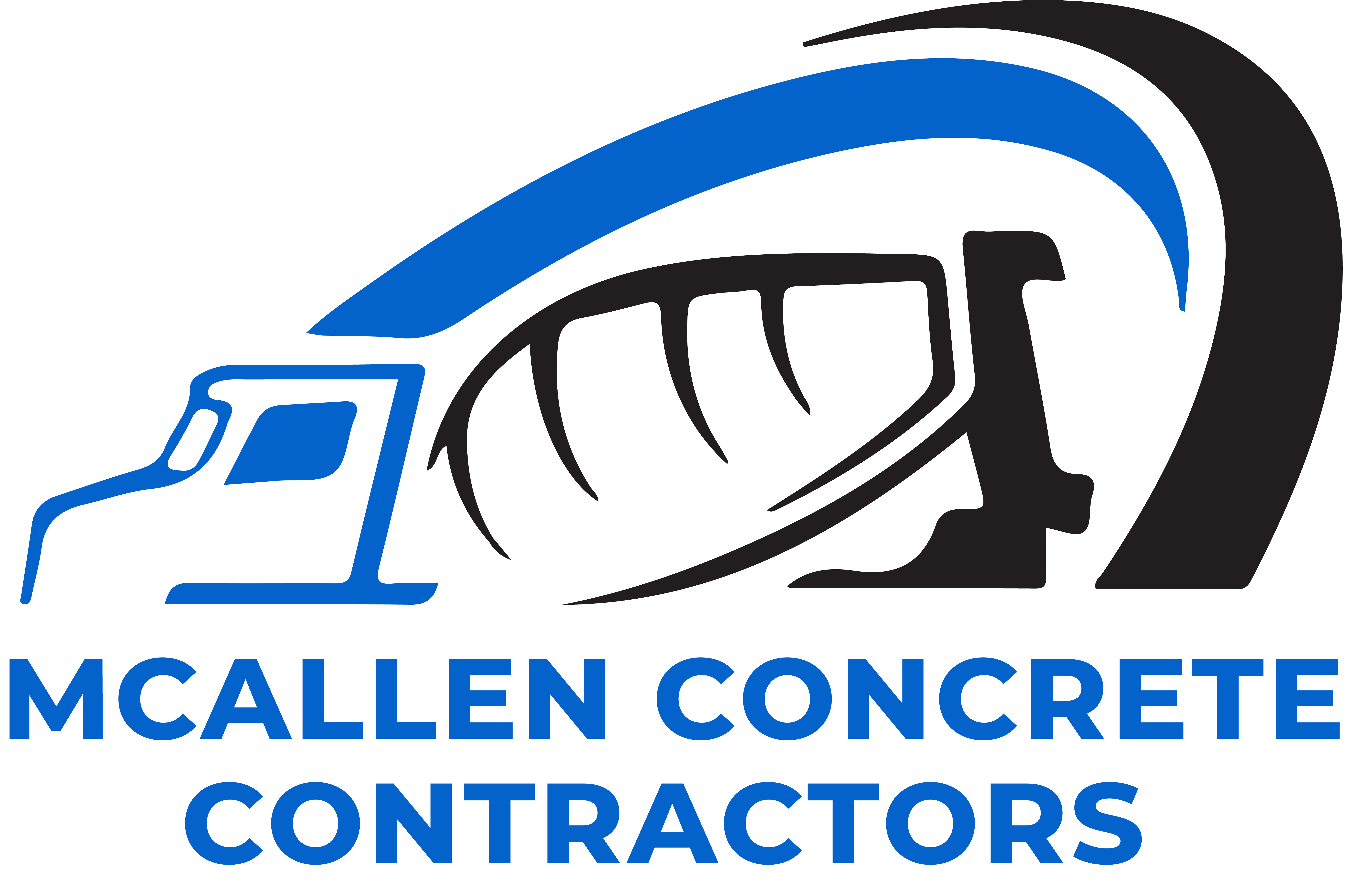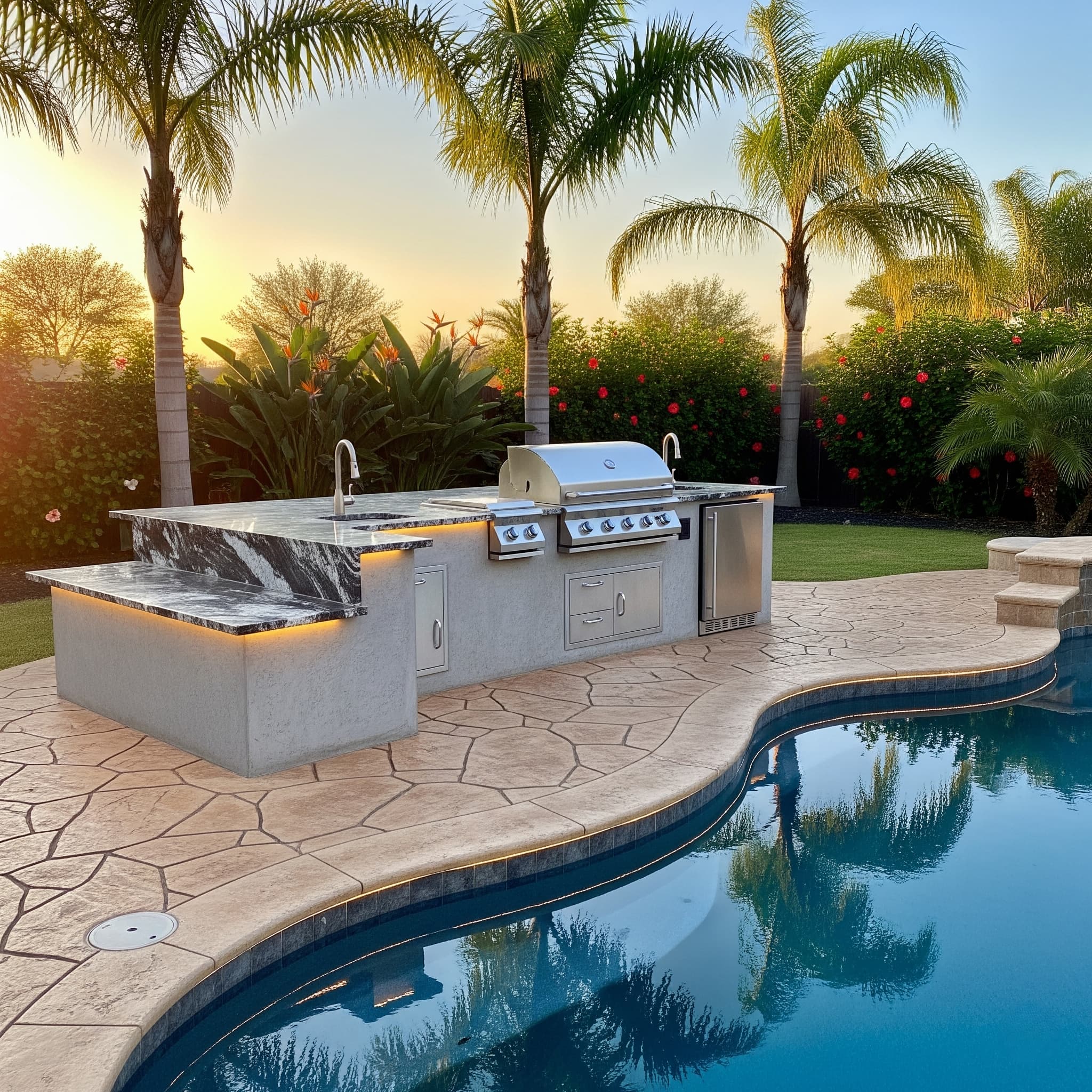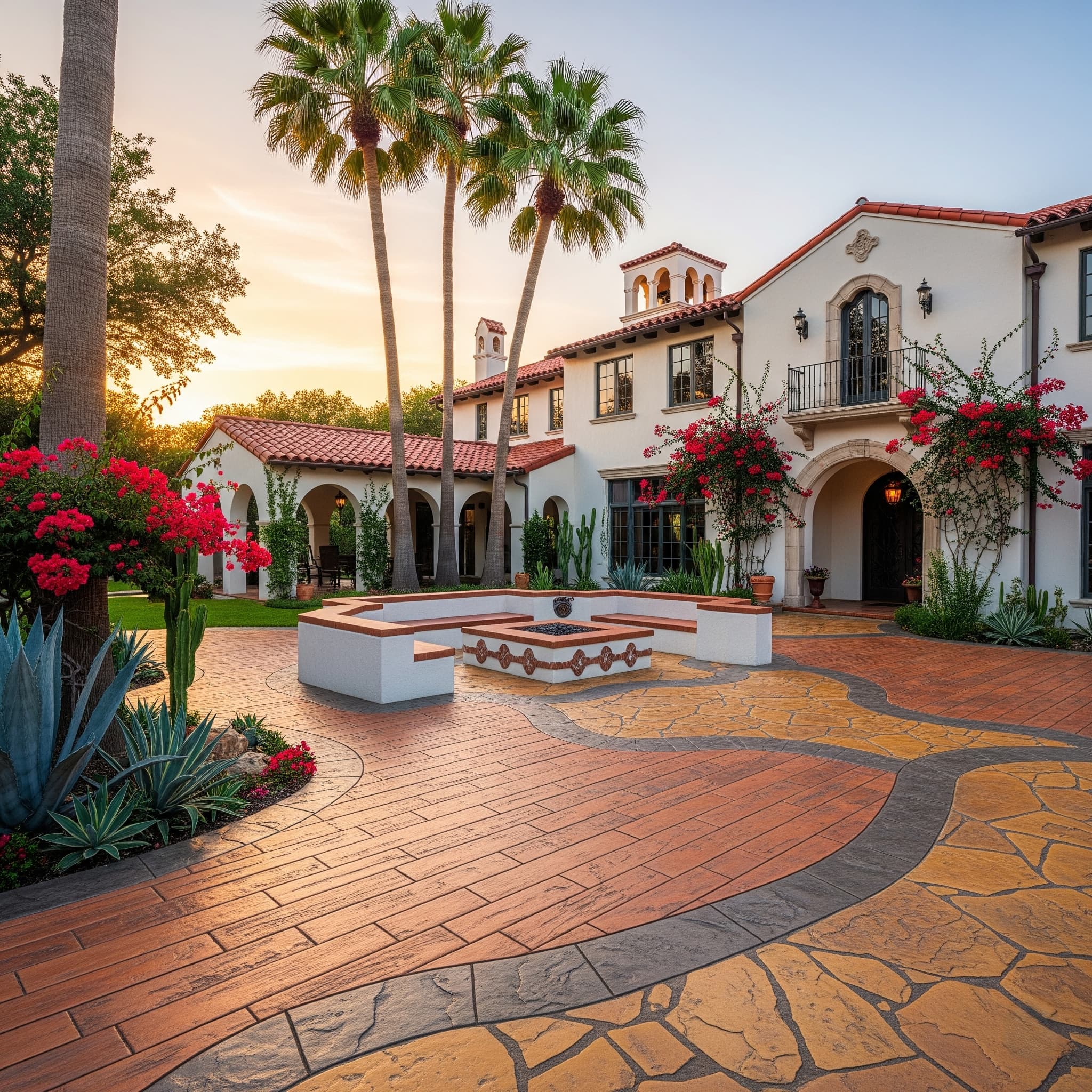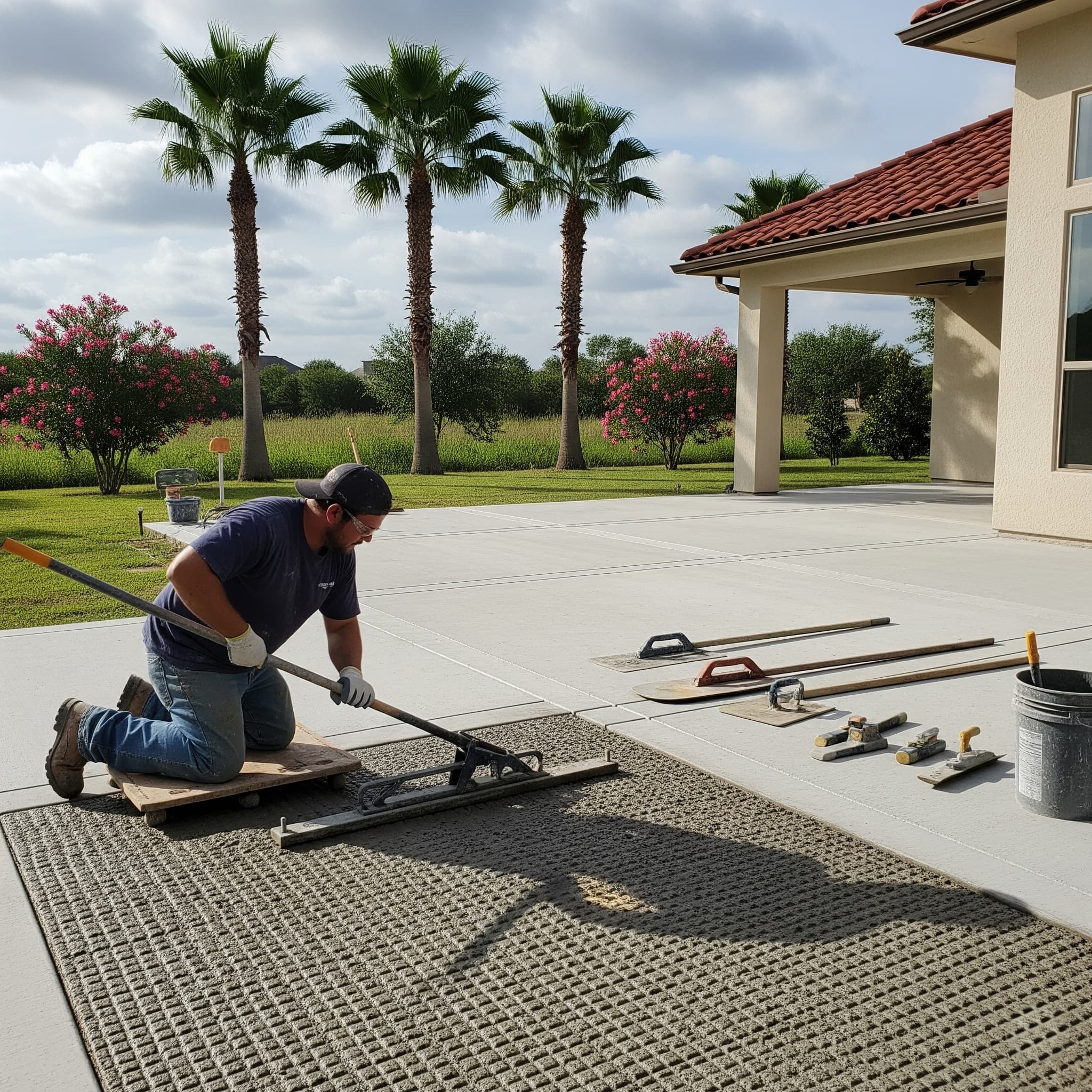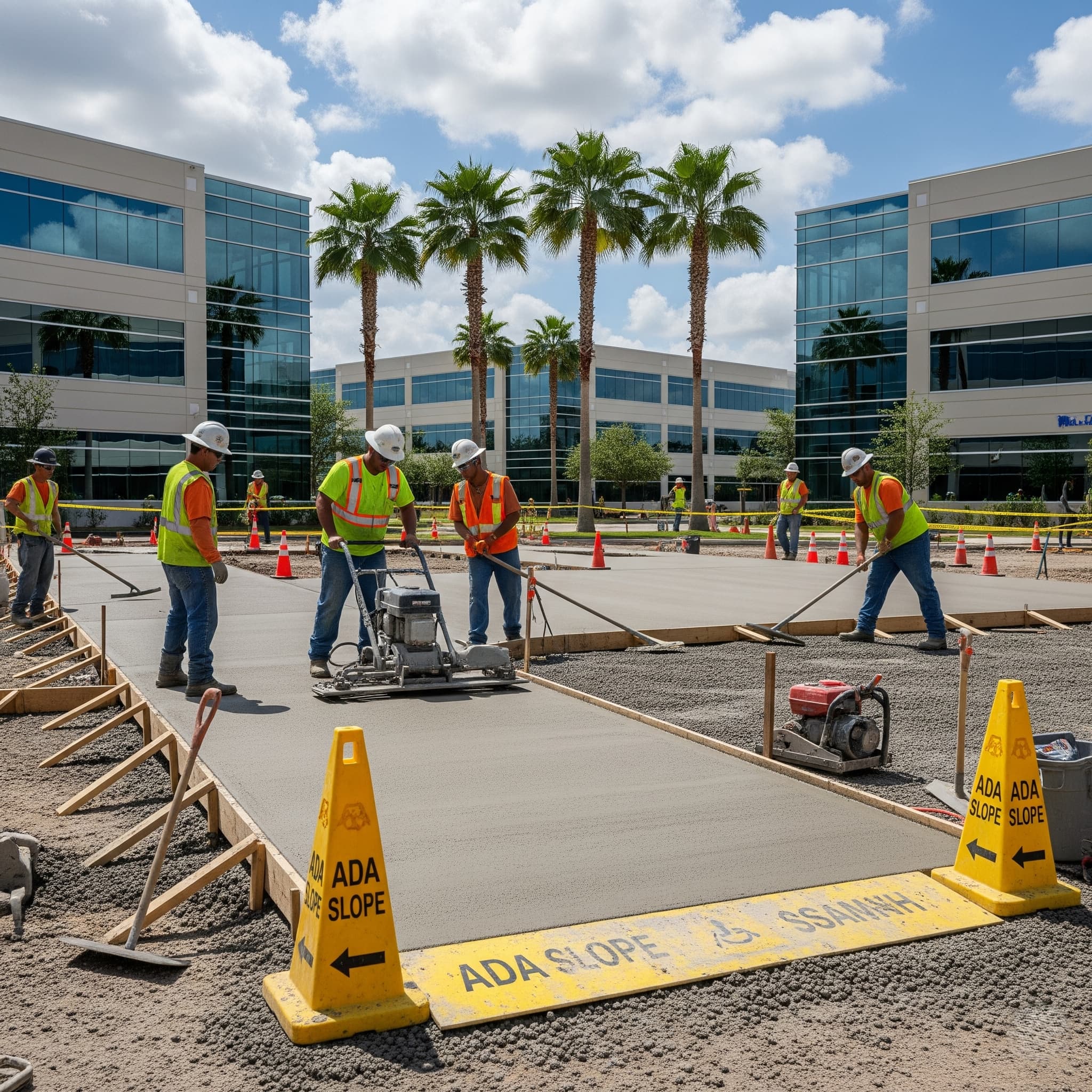
How to Properly Pour & Cure a Concrete Slab in McAllen
Concrete Slab McAllen
Successfully pouring and curing a concrete slab in McAllen’s subtropical climate requires understanding both fundamental installation principles and specific environmental considerations unique to our Rio Grande Valley location. With summer temperatures reaching 97°F and high humidity levels throughout much of the year, proper technique becomes essential for achieving durable, long-lasting results. Whether you’re planning a residential foundation, patio installation, or commercial project, mastering these processes ensures your concrete investment provides decades of reliable service. Professional concrete slab installation involves systematic preparation, precise execution, and careful attention to curing protocols that account for McAllen’s climate challenges and soil conditions.
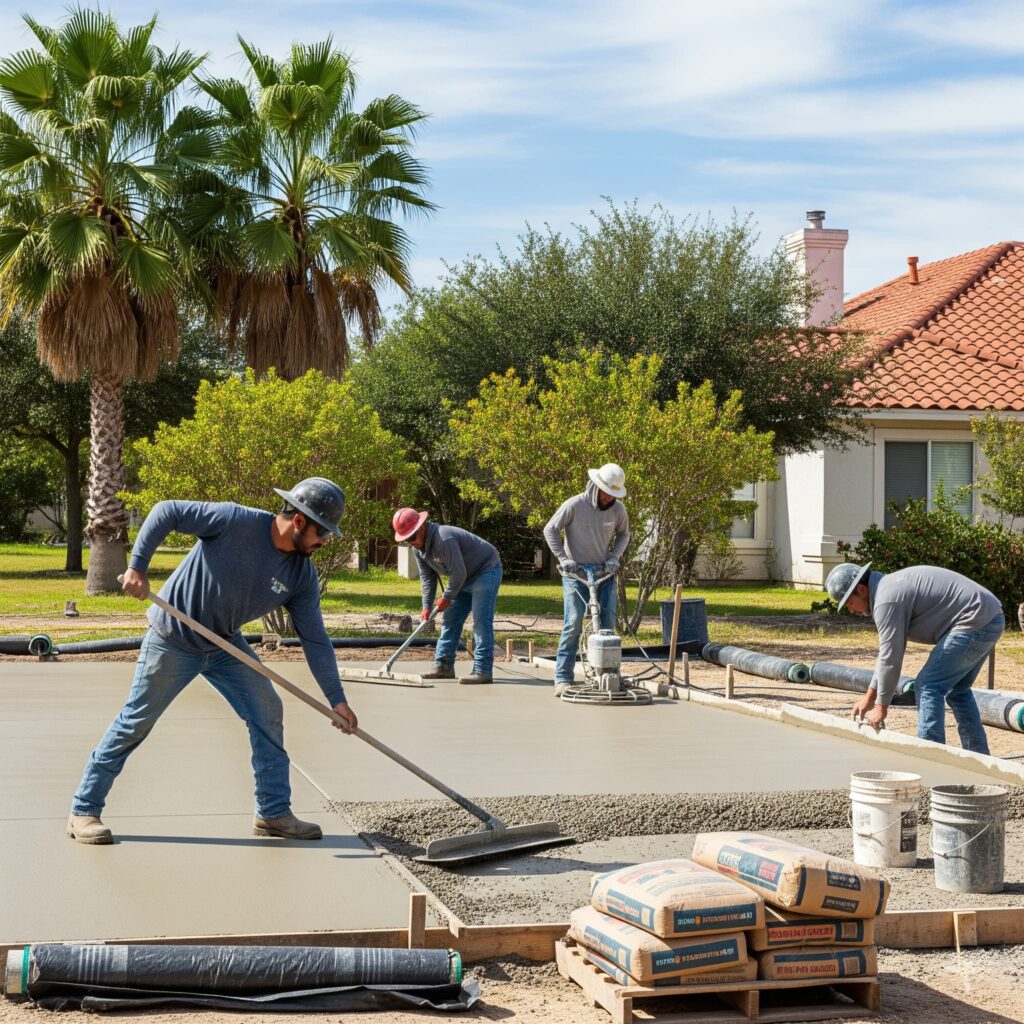
Site Preparation and Foundation Requirements
Proper concrete slab installation begins with thorough site preparation that addresses McAllen’s clay-rich soils and drainage considerations. Excavation should extend 7 inches deep for standard 4-inch slabs, allowing 3 inches for a compacted gravel base and proper concrete thickness. The clay soils common throughout our area require careful moisture management to prevent expansion and settling that can damage concrete over time.
Gravel base preparation proves critical for long-term slab stability in McAllen’s environment. Use 3-4 inches of high-quality crushed stone or all-purpose gravel, compacted in lifts to achieve solid, uniform support. The gravel should be slightly damp during compaction but not saturated, as excessive moisture can create weak spots that lead to future settling and cracking. Proper compaction creates a firm foundation that doesn’t give under foot pressure.
Form Construction and Reinforcement Placement
Building accurate, sturdy forms ensures professional results and proper slab dimensions. Use straight 2×4 or 2×6 lumber secured with wooden stakes and deck screws, ensuring form boards sit level and butt tightly together. Forms should extend 1.5 inches above grade to accommodate both gravel base and concrete thickness. Any gaps or irregularities in forms will transfer directly to the finished concrete surface.
Reinforcement placement depends on intended use and local building requirements. Standard residential slabs typically use welded wire mesh or rebar grids placed at mid-height within the concrete thickness. For heavy-duty applications or areas with problematic soils, additional reinforcement may be necessary to prevent cracking and ensure structural integrity under varying load conditions.
Concrete Mixing and Temperature Considerations
McAllen’s climate demands careful attention to concrete temperature during mixing and placement. The ideal concrete temperature ranges from 50-80°F, with temperatures above 80°F requiring special hot weather concreting practices. During summer months when ambient temperatures exceed 85°F, plan pours during cooler morning hours to maintain workable concrete temperatures and extend working time for proper finishing.
Standard concrete mixes work well for most McAllen applications, though summer projects may benefit from retarding admixtures that slow initial set times in high temperatures. High humidity levels actually help concrete curing by reducing rapid moisture loss, but proper concrete curing still requires active moisture management throughout the first week after placement. Work with local suppliers familiar with regional conditions to select appropriate mixes for specific applications and seasonal requirements.
Placement Techniques and Timing
Successful concrete placement requires a systematic approach and a sufficient crew size to complete finishing before the initial set occurs. Pour concrete in sections if necessary, working systematically across the slab area to maintain consistent thickness and proper consolidation. Use screed boards longer than form width to level concrete and eliminate high or low spots that compromise final surface quality.
Timing becomes critical in McAllen’s heat, as working time decreases significantly in temperatures above 85°F. Have all tools prepared, crew members assigned specific tasks, and finishing sequences planned before concrete arrives on site. Rapid temperature changes or afternoon thunderstorms can dramatically affect working conditions, making preparation and efficiency essential for quality results.
Finishing Processes and Surface Treatments
Proper finishing begins immediately after screeding and continues through final surface preparation. Use bull floats to bring cream to the surface and close any surface voids, working systematically across the slab without overworking any area. Wait for bleed water to evaporate before beginning troweling operations, as premature finishing can trap excess moisture near the surface and weaken final concrete quality.
Edging tools create clean, rounded edges that resist chipping and provide a professional appearance. Control joints should be cut within 24 hours of placement, spaced every 8-12 feet depending on slab dimensions. Joint depth should equal approximately one-quarter of slab thickness to effectively control cracking locations. Use grooving tools or concrete saws to create clean, straight control joints that direct natural shrinkage cracking.
Surface Texture and Final Preparation
Surface texture affects both appearance and slip resistance, with choices ranging from smooth trowel finishes to broom textures that provide better traction. Broom finishing involves lightly dragging a concrete broom across the surface after final troweling, creating consistent texture patterns. The timing of texture application affects final appearance, with earlier application creating coarser textures and later application producing finer patterns.
Avoid overworking concrete surfaces, as excessive troweling brings too much paste to the surface and can create weak, dusty finishes prone to scaling and wear. Multiple light passes produce better results than heavy pressure or repeated working of the same areas.
Curing Methods for McAllen’s Climate
Proper concrete curing proves especially important in McAllen’s environment, where high temperatures and variable humidity can cause rapid moisture loss if not properly managed. Concrete, which is moist cured for 7 days, is about 50% stronger than uncured concrete, making curing investment essential for long-term performance. Begin curing immediately after final finishing to prevent plastic shrinkage cracking and ensure optimal strength development.
Water curing provides the most effective method for achieving maximum concrete strength. This can involve continuous misting, covering with wet burlap, or ponding water on horizontal surfaces. In McAllen’s heat, check curing materials frequently to ensure they remain moist, as dry burlap or plastic can actually draw moisture from concrete rather than conserving it. Maintain curing for a minimum of 7 days, with 28 days required for full strength development.
Alternative Curing Techniques
Membrane curing compounds offer practical alternatives when continuous water curing isn’t feasible. These liquid applications create protective films that reduce moisture evaporation while allowing chemical reactions to continue. Apply membrane curing compounds immediately after finishing, before surface moisture evaporates. Some products combine curing and sealing functions, providing long-term protection in addition to curing benefits.
Plastic sheeting provides another curing option, especially effective for protecting concrete from rapid temperature changes or unexpected rainfall during the curing period. Ensure plastic stays in direct contact with the concrete surface and is weighted down to prevent wind displacement. Clear plastic allows heat buildup that can accelerate curing in cooler weather, while white plastic reflects heat in summer conditions.
Temperature and Weather Management
McAllen’s climate requires constant attention to temperature effects throughout the concrete placement and curing process. Summers averaging 97°F create challenging conditions that demand hot-weather concreting techniques, while occasional winter temperatures below 50°F may require cold-weather precautions. Monitor both air temperature and concrete temperature throughout the process to ensure proper curing conditions.
Hot weather challenges include accelerated setting times, increased water demand, and a higher risk of plastic shrinkage cracking. Combat these effects through early morning pours, continuous misting during placement, and immediate curing initiation. Wind speed compounds hot weather effects by accelerating surface moisture loss, making windbreaks or protective covers beneficial during finishing and early curing stages.
Seasonal Timing Considerations
Spring and fall typically provide optimal conditions for concrete work in McAllen, with moderate temperatures and lower humidity reducing weather-related complications. Summer projects require careful planning around peak heat hours and potential afternoon thunderstorms common to our area. Winter work, while less challenging than northern climates, still requires attention to temperature fluctuations and occasional cold snaps that can affect curing.
Plan concrete pours around weather forecasts, avoiding periods of expected rain, extreme heat, or rapid temperature changes. Having backup plans and weather protection materials readily available helps ensure project success regardless of changing conditions.
Quality Control and Inspection Points
Systematic quality control throughout the concrete placement process ensures professional results that meet intended specifications. Monitor slump consistency as concrete is placed, checking for proper workability without excess water content. Inspect reinforcement placement before pouring begins, ensuring proper cover distances and secure positioning that won’t shift during concrete placement.
Surface inspection during finishing identifies any issues requiring immediate attention, such as bleeding, segregation, or surface defects. Document concrete temperature, ambient conditions, and timing of major process steps to track proper procedures and identify any deviations that might affect final quality.
Long-term Performance Expectations
Properly installed and cured concrete slabs provide 30-50 years of reliable service in McAllen’s environment when constructed following proven techniques. Regular maintenance, including crack sealing, surface cleaning, and periodic re-sealing, helps maximize lifespan and maintain appearance. Understanding proper installation processes helps identify quality work and ensures your concrete investment delivers expected long-term value.
Monitor newly placed concrete for the first several weeks, noting any unusual cracking, settling, or surface issues that might indicate installation problems requiring prompt attention. Early identification and correction of issues prevent minor problems from developing into major repair requirements.
For McAllen property owners planning concrete slab projects, understanding proper installation and curing techniques ensures successful outcomes that provide lasting value. Whether handling installation yourself or working with professional contractors, knowledge of these processes helps achieve quality results suited to our local climate and conditions. When you’re ready to proceed with your concrete slab project, McAllen Concrete Contractors provides expert installation services and proven techniques.
